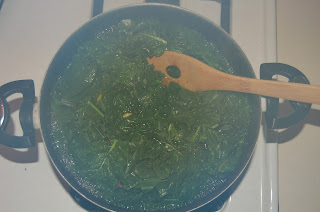Recycling!!!!!
Adirondack Style Chair from old Pallets
Totally cheap, Totally comfortable, Totally worth it.
About 1 1/2 hrs of labor.
So this project is easily completed in about an hour and a half from start to finish. I'm guessing an hour each from here on out (since I had to adjust the seat angle a few times on the first one.) Now I can use the completed one as a template. The nice thing is,....there really isn't any waiting time in between steps. The only waiting comes at the end (after you seal it, if you choose to.) This project requires only 2 pallets, some screws, and some sealer. SUPER CHEAP!!!!! I say 2 pallets because you need to have 2 runners for each chair section, and I haven't seen very many oak pallets with more than 3 runners (the thicker boards which all of the slats nail to). I would not recommend using pine pallets. They are cheaply made, and easily break. This would just be asking for an accident. You can usually go to any lumber company, or even some trucking companies and ask them for a few pallets. I have yet to be charged for them. FREE is good.
You need a saw. I used a chainsaw, but obviously you can use anything really. Jigsaw, circular, handsaw, whatever.
Choose one side of a pallet which has few, if no cosmetic or mechanical imperfections. Carefully cut the slats to the edge of the runner like the picture shows. Do this with both pallets.
After you cut one side of the pallets away, then it's time to remove some slats.
On the backrest piece, I removed the bottom 3 slats from the front side, and all but 3 on the back side (the one's on the ends, and the one closest to the opening on the front.) The slat left on the bottom will be in contact with the ground and will prevent the chair legs from digging into the ground.
On the seat piece, I removed all but three of the slats for the actual seat platform. I left the slats underneath them too, for rigidity. Any nails that were left in the wood, you can either pull, or pound in. I chose to pound them in
Slide the long legs of the seat piece through the backrest portion and screw once on each side. Note here, that the chair pieces do not line up. One will be INSIDE of the backrest section, while the other will be OUTSIDE of the backrest section. Since pallets have the same measurements between the runners, there really isn't a way to "magically" change this dimension, without investing a lot more time. The offset you will see in the seat, really doesn't change the comfort. Place the chair upright and judge (with your eyes) whether the angle of the dangle will work for you. You don't want your back laying too far back, and you don't want the seat to be sticking up at a 45 degree angle to the sky. Make any adjustments you think you need, then drive a few more screws into the joints to make it more secure.
Then, with the extra runners from the left over pieces of the pallets, cut 2 supports (one runner, cut at about a 30 degree angle will work).
Place the angled edge against the back legs of the chair and slide them up to the backrest section. Screw them in place. This is the main support which will prevent the chair from collapsing.
Done. Well, almost. Technically, this is as far as you need to go, but it won't last as long.
I rough sanded the edges with 50 grit sandpaper to get rid of the splinters. Then I also ran the palm sander across the face or each board just to make it easier to seal it. I didn't want to take off the rings and scars that were left behind by the product which was once loaded onto the pallets. This is part of the look I wanted to keep.
I sealed the chair with some Thompson water seal to help protect it from the elements.
I'm planning on making quite a few more of these chairs to dress up the backyard.
Easy!, Fun! and Cheap!























































